Aegle marmalos / Bael / বেল
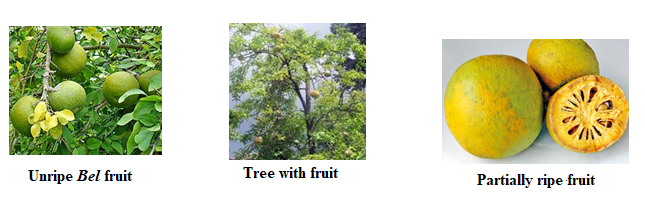
General features: The botanical name is Aegle Marmalos which is commonly known as Bael or Wood Apple in English. In Hindi or in Bengali language it is called Bel (বেল). The tree originates mainly in the Indian Subcontinent eg, India, Nepal, Sri-Lanka, Myanmar, Thailand, Malaysia and the islands like Andaman Nicobar and several others within Indian ocean. To the Hindus, it is a sacred tree including its fruits and leaves. As per the Hindu myth, the tree is a beloved sanctuary of Lord Shiva, the powerful God of peace and destruction, where under its shade He returns to meditate. In Indian villages, the tree is always noticed at the site of Shiva temple. It also grows wildly in the tropical rain forests, hills and plains of the Indian subcontinent. It can grow even in dry and adverse conditions where others refuse to survive thus being considered as a tolerant plant. The fruit starts appearing at the onset of dry season that takes nearly a year to ripe. The plant belongs to Rutaceae family and is a member of monotypic Aegle genus. It is a deciduous, medium sized tree, 30 – 50 ft high. The bark appears to be pale brown to greyish. The stem is long and straight. If bruised it oozes clear slimy and gummy sap resembling to gum Arabic named ‘Feronia gum’ that solidifies due to the aerial oxidation when left for a long time. The sap has sweet but irritating taste. The leaves are 2 – 4 inches long and 1 – 2 inches wide. They are trifoliate, alternate and ovate having rounded base with pointed tips. The young leaves are pinkish green in color that turns dark green at the matured stage. Bael leaves are extremely sacred to the Hindu religion. The flowers are yellowish and pale green with scented sweet smell, grown in clusters. The fruit is either round or occasionally pear shaped with thick and hard cover shell having diameter of 2 – 6 inches often called Wood Apple. The shell is green but when ripened it turns yellow. The shell never splits even the fruit gets overly matured. It takes almost a year to grow and ripe and finally reaching to the size of a grape fruit. The shell can be cracked only by a hammer. Inside, there are about 15 – 20 sections filled with the orange pulp and each section has number (10 – 15) of oblong flattened seeds ~ 0.3 inch long, confined in a sack of adhesive that solidifies on drying. The yellow pulp tastes like marmalade releasing pleasant sweet-smell possessing strong astringency. It is highly mucilaginous by nature. The fruit pulp is consumed throughout India by making beverage / sherbet which is extremely refreshing in hot summer days. The drink is considered to be healthy particularly for the digestive system. In recent days squash prepared from the pulp is commercially available in the market as a bottled drink. The partially ripe fruits after slicing are preserved in caramel or sugary syrup which is popularly known as Bel Murabba in India, good for reducing any chronic intestinal problems often included in the daily life diet. Over 5000 years, the fruits, leaves and roots of this indigenous tree are used as dietary supplements or for traditional medicines following the norm of Ayurveda. Loads of ailments of diverse categories are treated by using them. Bael fruits find home uses according to the ethno-medicinal needs for treating chronic diarrhea, dysentery, peptic ulcers or respiratory problems. Its use as a laxative is widely known. These therapeutic effects are largely based on its anti-oxidant, free radical scavenging or inhibition of lipid peroxidation effects which also includes anti-parasitic, antiviral and antibacterial actions too.
There is another kind of Wood Apple or Bael, naming Liomonia Acidissima available in the Indian subcontinent which is commonly called Kod – Bel belonging to Limonia genus. In English it is called Elephant Apple. The tree is similar in height (~ 30 ft tall) with rough spiny bark. The fruits have hard shell like original Bel fruit but produce smell of citrus when crushed. The pulp is brown colored spread with white seeds and much less gummy by nature. It is a nutritious food loaded with protein, carbs, minerals (Fe & Ca), vitamin B and high level of Vitamin C. The fully ripe fruit is indeed a high calorie food (~ 50 Kcal / 100 g). The pulp is often used in making Achar or citrus drinks which is very pleasant in hot summer days. No religious story is attached to it.
Mythology: Popular legends are all over the Indian subcontinent about the Bel tree / Aegle Marmalos including leaves and fruits which are intensely associated with the Hindu mythology. Hindu folklore indicates that Bel tree is profoundly linked to the Lord Shiva. According to the Shiva Purana, traditional lore dictates that the tree symbolizes Lord Shiva himself therefore it is the most devout and holy object to all Hindus in this terrestrial domain. It symbolizes the supreme religious replica of Hindu religion, so without the Bel leaves no Puja is ever fulfilled thus ensuring its mandatory presence. The trifoliate configuration connotes three distinct acts of Lord Shiva; Creation, Preservation and Destruction, allegorically representing the divine scrutiny through His three eyes. It’s a belief that offering the Bel leaves to Shiva will eradicate any misdeeds or sins within last three births. Praying under Bel tree is a holy act bringing happiness in life. The tree is called ‘Sri-briksha’ (শ্রী-বৃক্ষ) enabling to create happiness and tranquility in life. Both in Sanskrit and Bengali, the leaf is named ‘Bilwwa Patra’, symbolizing the great ‘Trident’ (ত্রিশূল) in Shiva’s right hand executing the blissful acts of ‘Creation, Preservation and Destruction’ keeping the universe in right order. Lord Shiva seeks divine serenity while meditating under its shade. It is His most favorite place in the universe. The mythical story says that this deciduous tree is actually the creation of Goddess Lakshmi, Shiva’s younger daughter. Once out of resentment to father, she climbed up the tree showing no intention to be down any time soon. So, Shiva told her that until she is down, He will sit and continue to meditate under it. From then on, it becomes His favorite retreat even after her departure and gratification. Multitudes of folklores relating Bel tree and God Shiva are floating all over the India that astoundingly amuses both urban and rural population even these days.
Traditional health uses: The fruit provides enormous health benefits. Besides fruit, leaves and roots also have the huge medicinal role. Decoction made from the leaves removes mucus from lung and trachea in the event of cough or cold. It is diaphoretic producing perspiration helping lower the body temperature during fever. The leaves are normally useful in treating fever, abdominal pain, urinary problems, heart palpitation, dysentery and diarrhea, dyspepsia, vomiting and seminal weakness. The root extract helps piles sufferers and prevents dysentery and diarrhea. The fruit pulp which are normally used in frequent occasions offers a great number of health benefits as shown below.
Digestion – The pulp acts as decent digestive aid and a remedy toward chronic digestive disorders thus often used to cure recurring dysentery. The gum exudates either from branches or that resides inside the fruit, naming ‘Feronia gum’ can cure intestinal diarrhea and dysentery. It exerts laxative action eliminating chronic constipation and associated discomforts. The pulp prevents peptic ulcers and piles. The large tannin and flavin content in both fruits and leaves exert strong anti-inflammatory effect that helps prevent chronic inflammation or ulcers inside the digestive tract. It also efficiently removes any worms, fungus or parasites inside the intestine. In overall aspects the pulp helps maintain good digestive order if added daily in the diet.
Protecting liver function – The fruit is a large reservoir of antioxidant especially β – carotene (~ 60 mg / 100 g pulp) and in addition it has thiamine and riboflavin and other vitamins. Their combined effect enables to cure chronic or inflammatory problems produced within liver.
Preventing Scurvy – This life threatening disease is caused by the vitamin C deficiency. The fruit pulp has high level of vitamin C (~ 30 mg / 100 g pulp). Including it in daily diet would reduce the risk of Scurvy. It also boosts the immune system preventing any further possibility of viral or microbial infections.
Controlling diabetes – The presence of Feronia gum in pulp or leaves also helps manage diabetes by balancing the plasma glucose while preventing the spikes and plunges that often causes adverse situations for the diabetics.
Respiratory problems – The decoction made from leaves would help remove mucus providing comfort for chronic respiratory sufferers. It helps sore throat during cold, cough or fever by eliminating phlegm from the respiratory tract.
Reducing miscellaneous problems – 1) Purifying blood by removing toxins; 2) Boosting energy; 3) Beneficial to kidney for enhancing detoxifying ability; 4) Preventing malaria.
Nutrition: The fruit has good deal of nutritional values as per dietary concern. Approximately 100 g of fruit pulp has the following properties: The water content ~ 64 % and dietary fiber content is ~ 32 %, Protein ~ 2 % and fat ~ 0.5 %. As per mineral content, Ca ~ 85 mg, P ~ 32 mg, Fe ~ 1 mg, K ~ 600 mg, Cu ~ 0.2 mg. Concerning vitamins, Vitamin A ~ 55 µg, Vitamin B2 ~ 1.2 mg, Vitamin C ~ 30 mg, Thiamin ~ 130 µg, Riboflavin ~ 30 µg and β – carotene ~ 55 mg. The overall energy provided by one gram of fresh pulp is ~ 140 Kcal. Surprisingly, the fruit has high level of Potassium and β – carotene which may provide good heart health and immune boosting actions.
Phytochemicals and biological effects: Myriads of phytochemicals exist in fruit pulp, leaves, barks, seeds and roots of the Bel tree. All have the similar or several diverse medicinal role which are largely beneficial for the health. The leaves are often applied for treating fevers, abdominal pain, and palpitation of heart, urinary trouble dyspepsia, dysentery and vomiting.
Fruits, leaves and bark contain phenolics, carotenoids, alkaloids, pectin, tannins, coumarins, flavonoids and terpenoids. It also has many volatile compounds which fall in the category of terpenes and non-terpenes. A majority of them are, Hexanal, isoamly acetate, limonene, β – phellandrene, p – cymene, acetoin, dehydro – p – cymene, linalool, 3,5 octadiene – 2 – one, α – cubebene, trans – p – Mentha – 2- 8-dieneol, citronellal, cineole, p – cymene, citronella, Citral, cuminaldehyde, β – cubebene, β – caryophyllene, hexadecane, Pulegone, α – humulene, verbenone, Carvone, carvyl acetate, dihydro-β – ionone, €- 6, 10, dimethyl-5,9-undecadien-2-one, β – ionone, psoralen, caryophyllene oxide, humulene oxide and hexadecanoic acid. The coumarin derivatives found are, aegeline, aegelenine, marmelin, O – methyl halfordinol and marmelosin. In addition the pulp has the others like, tartaric acid, linoleic acid, tannins, flavon-3-ols, leuco-anthocyanins, anthocyanins and flavonoids attached to the glycoside. The experiments verified that eating pulp in daily diet reduces the radiation induced sicknesses subsequently enhancing the patients’ survival. This radio-protective effect could be due to powerful free radical scavenging actions imparted by the flavonoids, β – carotene and other anti-oxidants within the pulp. A few of the phyto-compounds belonging to different categories in fruit pulp are shown below.
Pectin – In addition, the pulp of Bel fruit has large reservoir of polysaccharide (~ 38 % / 100 g wet pulp without seeds) mostly belonging to the pectin family. The unripe fruit possesses the most. Pectin, a natural polysaccharide is widely used in the food industry to prepare jams, jellies, lozenges and other confectioneries. It is frequently applied to the medicine to enhance the viscosity particularly for its demulcent effect. Inside intestine it increases the stool volume by swelling combating both constipation and diarrhea. It is used in making the commercially available antidiarrheal drug ‘Kaopectate’ by mixing with the kaolin (Al2Si2O5 [OH]4). Pectin is a polymer (Mw ~ 200) of D – Galactouronic acid. The molecular weight varies depending on its sources. As a bio-colloid it finds enormous applications as a food stabilizers or for the preparation of nanoparticles used for cosmetics and medicines. Pectin offers many beneficial actions primarily due to its physico-chemical nature. Being negatively charged (ζ = – 25 mv) polyelectrolyte for carrying large number of – CO2H groups it can bind to number of cations. The polymer also contains – CONH2 and – CO2CH3 intermittently in addition to the – CO2H groups. For its huge array of negative charges, pectin acts as good detoxifying agent binding toxins and heavy metals. Further due to its good rheological or gel setting and high swelling nature, it is frequently used for the sustained release of various drugs that are doped inside. Its swelling index is high at physiological pH, 7.4 and also in the water. The combined effect of surface charge, rheological and emulsifying ability help exert strong anti-bacterial and antimicrobial role. Presumably, many believe that the fruit is consumed mainly for the medicinal reason. Additionally pectin exerts potent anticoagulant effect enhancing the blood coagulation time. The effect seems to be further potentiated for having coumarin derivatives which are known for their anticlotting behavior.
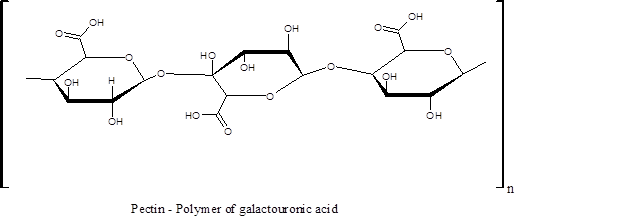
Obviously, biological and physiologic actions of Bel extracts occur due to the naturally synthesized chemical compounds within fruit, leaves or bark which have been recorded from the countless experiments. Bel has been studied thoroughly both in vivo and in vitro and its major components are isolated and identified including their pharmacological roles. Additionally, its ethnomedicinal use and effectivity have been verified for more than five millennia through various ways of consumption. These actions are mostly due to terpenes, flavonoids, carotenes, alkaloids and other bioactive components.
Terpenes – It is known that both fruit and leaves of Bel have number of terpenoids which induce strong physiologic effects. For example, Citral, a monoterpenoids produces potent anti-inflammatory actions via corticosterone independent pathway also simultaneously imposing antipyretic action. Whereas Limonene causes muscle relaxation also enhancing the sleeping time. Menthol triggers the TRPM8 receptor offering cooling sensation. Further, it blocks the Na+ channel preventing arrhythmia. Menthol can act also as an analgesic. It is a positive allosteric modulator of GABAA receptor that enhances the GABA transmission inducing anesthetic effect. On the other hand, α – pinene, normally used in the aromatherapy lowers the heart rate and also acts as anti-inflammatory compound by suppressing the MAPK. Camphor activates TRPV3 channel causing warm sensation that also produces vasodilation, perspiration, heart rate increase and urination. It also has anti-inflammatory, local anesthetics and shows antimicrobial effect. Besides having monoterpenoids, the fruit, leaves, berks and stems have several triterpenoids. The significant one is Lupeol which has versatile actions while acting as anti-protozoal, anti-microbial, anti-inflammatory, chemopreventive and anti-cancer / anti-tumor. It is a potent inhibitor of prostate and skin cancer. Its anti-inflammatory effect is via the reduction of IL- 4 production by T helper cells. The compound also acts as a male contraceptive by blocking the Ca+2 channel action of sperm.
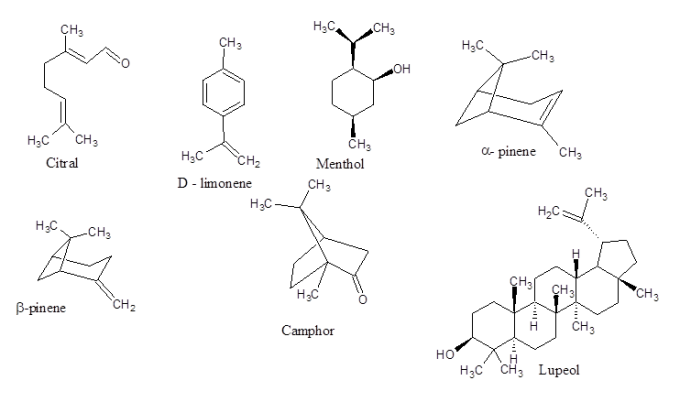
Terpenes
Flavonoids – The large level of flavonoids like Anthocyanins or Leucocyanins in leaves, fruit pulp and bark influence varieties of actions by scavenging the free radicals (ROS, NOS or super oxides, -O2-) thereby preventing multiple damaging effects including lipid peroxidation which usually inflicts major cardiovascular problems. In that event, they also increase the activities of anti-oxidant enzymes like SOD, catalase or glutathione peroxidase. The incidences protect from number of chronic illnesses.
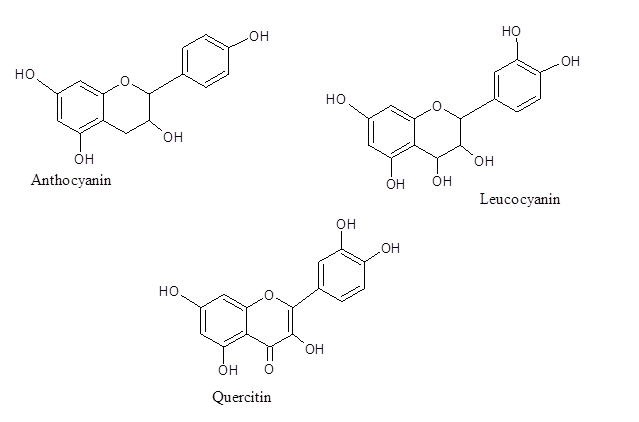
Flavonoids
Coumarins – Coumarins are also polyphenolic compounds of benzopyrone family having a phenol ring attached to the pyrone moiety. They are categorized either as benzo – α – pyrone or benzo – γ – pyrone. Both can exert physiologic actions. The pharmacological effects of coumarins practically depend on the substitution pattern. Records indicate that coumarin derivatives act as competitive inhibitor of vitamin K by depleting the Vitamin K molecule bound to enzyme, vitamin K epoxide reductase, thereby blocking the event of γ- carboxylation of glutamic acid residue linking to the clotting factor, Prothrombin. In that way it exerts its therapeutic potential as an anticlotting medicine. In addition to that anticlotting effect, it has other medicinal role like, fungicidal effect, anti-tumor effect and regulating the immune responses. Many of them like Umbelliferone is used in the sunscreen. Psoralen is effective against psoriasis, eczema, vitiligo (loss of skin pigmentation) and lymphomas. Marmelide is a powerful antiviral drug effective against Coxsackiviruses (B1 – B6) IC50 ~ 100 – 500 µg / ml. It is quite better than the antiviral compound Ribavirin. The compound is more efficient to work as antimicrobial and antifungal drug.

Coumarins
Alkaloids – Several alkaloids in Bel fruits, leaves or burks exert numerous beneficial role in health. For example, Skimmianine acts as selective 5HT2 receptor antagonist. It is also an inhibitor of acetylcholinesterase enzyme that produces antiplasmodial action helping against malaria. The compound lowers the pulse rate by working on heart. Aegelin produces antihistamine effect working as H1 receptor antagonist causing relaxation of tracheal muscle. Fragarine inhibits uterine action. It stimulates the adrenal gland releasing epinephrine thereby causing the relaxation of uterus.
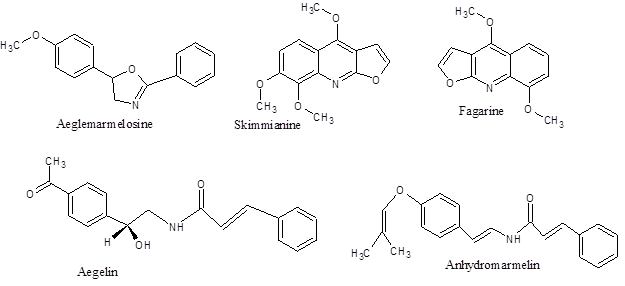
Alkaloids
Miscellaneous components – Besides the above compounds the plant has innumerable beneficial compounds. One of them is Marmelin. It is a napthyl derivative. It induces apoptosis in various tumor cells especially very effective on colon cancer by activating TNF – α, TRADD and caspases. The compound and several of its derivatives are now commercially marketed for fighting against number of cancers. The other component found in significantly high level is β – carotene. It is a very common form of carotene, extremely lipophilic, synthesized within the plants. It is a precursor of Vitamin – A, also widely used as a food coloring agent.
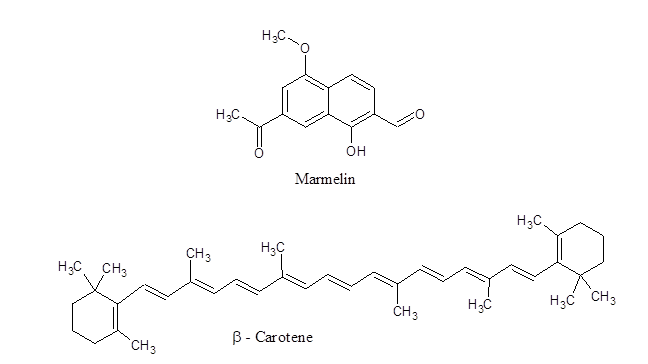
Pharmacological effects of Aegle marmalos / Bel: Following are the major pharmacological role that have been already verified experimentally by using various ways of extracts (Ethanolic / Methanolic / other organic solvent / water) of different parts of Bel / Aegle marmalos eg, leaves, fruits, stems and berks. The most noteworthy fact is, none of the extracts produce any toxic effects either in animals or human.
Antidiarrheal action – The semi-ripe fruit reduces bacterial colonization in gut epithelium including production and action of any enterotoxins. It is the most reason behind its frequent use against infectious diarrhea which has been regularly practiced even today. The in vitro studies indicate its potential is very comparable to Ciprofloxacin and it is active against the strains of E Coli, Shigella spp and Vibrio Cholera. The presence of high level of Pectin offers further substantial assistance behind this anti-diarrheal action.
Anticancer action – The leaf and fruit extract shows strong anticancer effects. They are effective against vast number of cell lines like, leukemic K562, T-lymphoid Jurkat, B – lymphoid Raji, Erythro-leukemic HEL, melanoma Colo 38, and breast cancers MCF-7, MDA-MB-231 and most of the prostate cancers. Identifiable agents are Lupeol, Eugenol, Citral, Cineole and D-limonene. Lupeol exerts G1-S phase cell cycle arrest. Besides Lupeol others also has impact on cancer cells by various means, like decreasing cyclin D1, D2 and cdK2 expression while increasing the expression of p21; cyclin dependent kinase inhibitor involved in controls the overall event. In addition to those compounds, Marmelin in fruit potently inhibits large section of epithelial cancer cells like, colon – HCT116, liver -Hep – 2 and alveolar carcinomas, human melanomas, pancreatic adeno carcinomas etc. Marmelin causes G1 cell cycle arrest inducing apoptosis in the tumor. Interestingly, it has no effect on any normal cells. Taking for granted, every section of Bel tree is enormously beneficial which has been already pointed out by the ancient Ayurveda.
Antiviral and antimicrobial effect – The extracts of leaf or fruit have powerful antifungal effect on animal and human fungi. The extract interferes with the Ca+2 di-picolinate metabolism pathway that would certainly inhibit the spore germination process. Ca+2 uptake and its subsequent utilization is usually the prime event determining whether it would germinate or stay dormant. The extract lowers the vegetative fungal body inside the host and in solid medium. The possible active compound identified is Marmelide (IC50 ~ 62.5 µg / ml) which exists in the leaves, stem, bark and fruits with varying levels. The efficiency (IC50) to inhibit Coxsackie viruses B1 – B6 is; leaves ~ 1000, stem ~ 500, bark ~ 1000, fruit ~ 250 µg / ml.
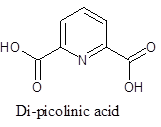
Antipyretic effect – The antipyretic effect of extracts are almost comparable to Tylenol / Paracetamol (100 mg / Kg body weight) which has been proven by the animal experiments.
Anti-inflammatory and anti-allergic effect – Extracts play anti-inflammatory role in the case of acute and subacute inflammatory conditions. Under the circumstances, leaf and fruit extracts show much dominance compared to the other parts. The identifiable agents are Lupeol and Skimmianine. Additionally, presence of Aegelin in the extracts exerts powerful antihistaminic effect by blocking the H1 receptor actions thereby protecting from any allergic and asthmatic manifestation.
Anti-fertility effect – As a folk medicine in the villages of India, leaf extract is often used to engender the anti-fertility actions. It is also identified that extract from any parts of the Bel tree provides good reversible male contraceptive effect. In that regard the bark extract is more pronounced. The compounds Marmin and Fragarine are recognized to be the active agents since both can individually reduce the male fertility. The animal experiments indicate that methanolic extract of bark reduces sperm density, motility, viability, and acrosome integrity. Exfoliation of elongated spermatids, nuclear chromatin condensation and degeneration are found within the testes. Finally time dependent complete infertility could be achieved. But importantly, the effect could be fully reversed after the withdrawal of treatment. So the extract appears to be an excellent male contraceptive which is used as per need.
Radio-protective actions – The effect of radiotherapy during the cancer cure often damages bordering tissues that inflicts cytotoxicity. The use of radio-protective agents, at this condition, is necessary to prevent that undesirable effect. Animal experiments show that the extracts of various parts of Bel plant have a potent preventive role, particularly the leaf extract, which is noticed to be superior to the normally used 2- Mercapto-propionyl -glycine. Experiments further indicate that Bel extracts reduce radiation induced DNA damage in peripheral blood lymphocytes and bone marrow cells within human and animals. The effect is caused by its scavenging ability of free radicals generated by the radiation.
Chemopreventive action – Experiments have proven that chemoprevention leads to the cancer prevention. Studies on animals show that the Bel fruit extract exerts chemopreventive role against numerous carcinogenesis. The presence of phytochemicals like Lupeol, Eugenol, Limonene, Citral, and anthocyanins are responsible for this act.
Diuretic action – The fruit extract exerts diuretic action as measured by the urinary volume and its Na content. The ethanolic extract (500 mg / Kg) produces more significant effect by excreting Na within experimental animals.
Antiulcerative effect – The aqueous and ethanolic extracts of seeds and fruit pulp show good anti-ulcer effect in various animal models. The effect is generated due to its large flavonoid content, particularly Quercitin that enhances the anti-oxidant enzymes assisting the anti-oxidant behavior.
There are far more pharmacological role played by the extracts from fruits, barks and stem or any other parts of the Bel tree which could be seen less significant because of their low levels. But considering the possibility of cumulative effects, adding the delicious fruit pulp alone in the daily diet would definitely help maintaining a good health. It is the basic reason why the tree has been revered historically for more than five millennia and even today. It has ample of things to offer regarding our health.
